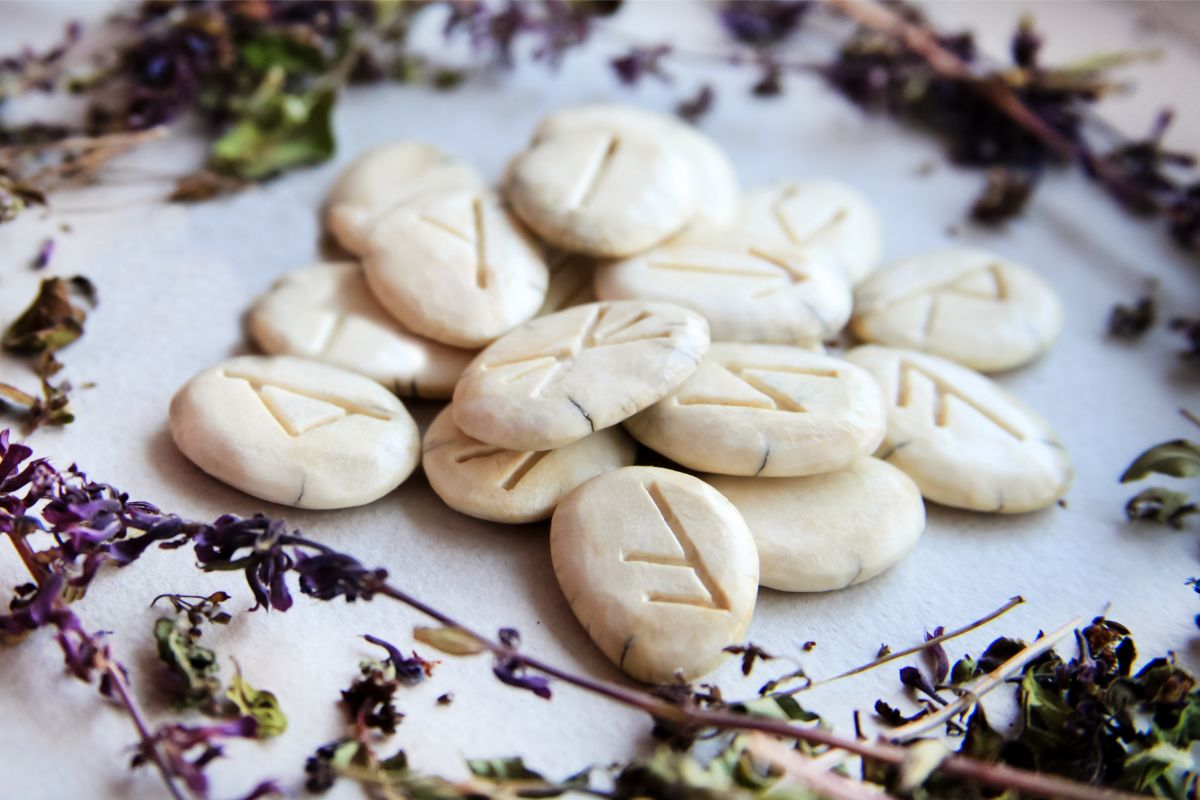Norse runes are very powerful Viking symbols often written on weapons, wood, or stones. Wunjo is the runic symbol for love and joy, but it isn’t the only rune for love.
During the Viking Age, Norse runes were used primarily for memorial and magical purposes. Runes were carved on hard surfaces, including weapons, amulets, headstones, and wooden markers. Elaborate runestone carvings were homages to Norse gods.
Wunjo, the Viking Rune for Love
Wunjo is the Viking rune for Love in all its forms, not just romantic love. Wunjo is also joy, connection, harmony, and family.
Part of the rune’s power is where, why, and how it is carved. A Wunjo carved onto an amulet worn by a romantic partner would denote romantic love. Wunjo could also be used for platonic or familial love.
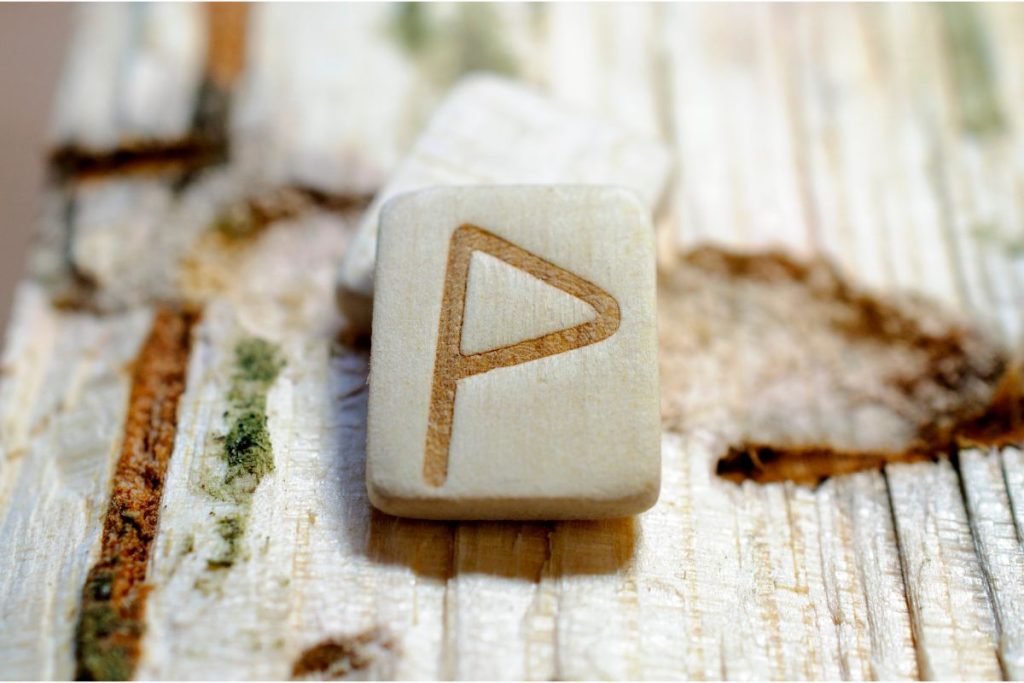
Sometimes Wunjo wasn’t being used for love at all but for joy and harmony, which is why knowing the intentions of the inscription was important.
Combining other runes with Wunjo would make the meaning more clear.
Binding the Rune for Love
When you bind runes, you combine their power and alter their meaning. Two or more runic inscriptions on a single runestone have far more power than two separate runestones. This is why it’s very common to bind the rune for love Wunjo with other runes.
Wunjo and Gebo
Combining Wunjo and Gebo is a powerful bind rune. Gebo means gift, specifically selfless gifts given freely. The rune Gebo can also mean reward for something that is worked for.
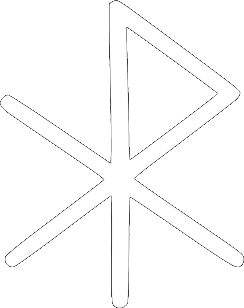
Combining the runes Wunjo and Gebo says this love is a gift, something the giver is willing to work for and maintain.
Wunjo and Algiz
You can bind runes like Algiz with Wunjo, which would denote protective love, or protection of a loved one.
Wunjo and Ehwaz
Ehwaz bound with Wunjo is love within a partnership.
Because Ehwaz is the connection between horse and rider, or connection between two warriors, a bind rune with Ehwaz and Wunjo can be love between two close friends who feel more like family.
Other rune meanings you need to know
Great care must be taken when combining runes. Like all magic symbols, misunderstandings can spell disaster. And many runes have multiple meanings.
Hagalaz
Hagalaz (hail) is a powerful Norse rune that has contrasting meanings. It means stormy weather and destruction but also fortitude and strength.
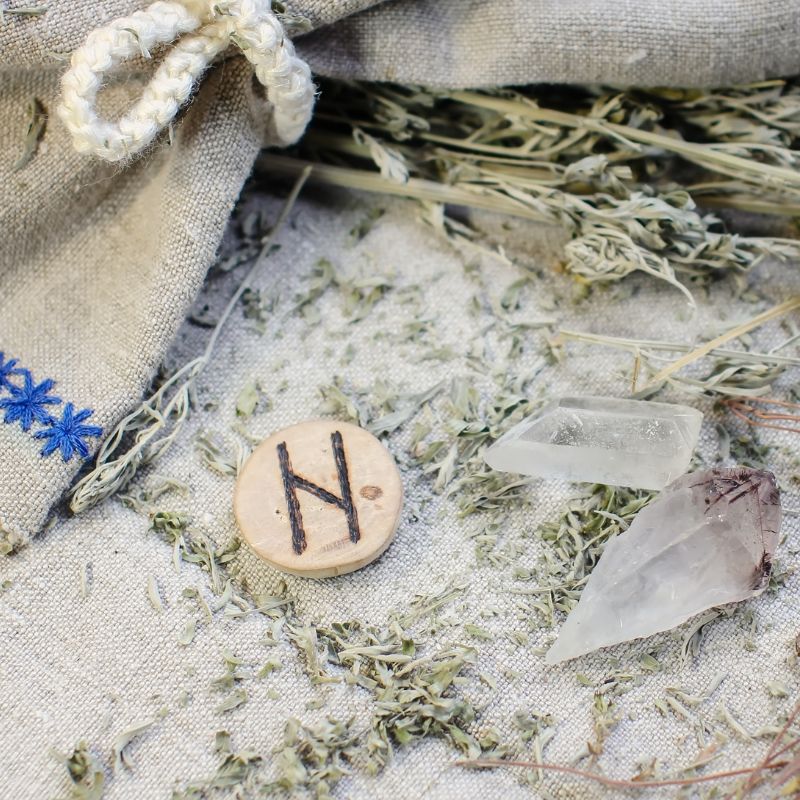
If you and your loved one have overcome countless odds to come to where you are now, Wunjo and Hagalaz combined is a great way to memorialize your love that weathered every storm.
Adding Hagalaz to a bind rune for a new and untested partnership might bring bad fortune.
Othala
Othala (ancestry) combined with Wunjo is more appropriate for familial love or decades-long partnerships. Othala is wisdom, wealth, and inheritance.
A parent might give a bind rune with Othala and Wunjo to a child, especially their firstborn. Adding Algiz for protection would strengthen that connection even more.
Uruz
Uruz is a rune for healing or overcoming the odds. This powerful rune also symbolizes starting a new chapter and walking away from what’s holding you back.
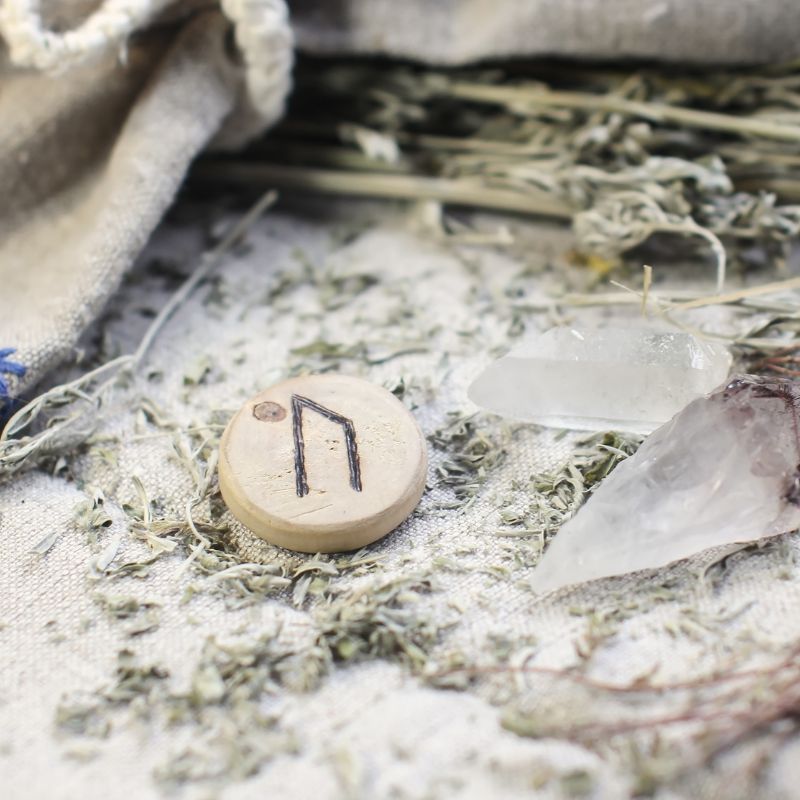
Uruz can be combined with many other runes, including Hagalaz, for strength. Uruz can also be combined with Gebo (gift) or Othala (wisdom).
What are Nordic Runes?
Nordic runes are a writing system used by the Scandinavian people of the Viking Age.
These Germanic tribes used these Norse symbols to memorialize lost loved ones and to communicate through carvings on trees, stones, and other hard surfaces.
Viking warriors also carved these magic symbols on their weapons and other possessions to imbue the object with some of the rune symbol’s powers.
While the Runic alphabet could be used to write words down, it was a complicated process. Carving runes was also tedious, so runes were reserved for the most important uses.
The Germanic people preferred passing down their stories, poems, and other information orally in the Old Norse language. Even the Runic alphabet itself was learned orally.
Runic poetry listed the names and explanation of every rune, one for each stanza. Three Runic poems were preserved:
- the Anglo-Saxon (Old English) Rune Poem
- the Icelandic Rune Poem
- the Norwegian Rune Poem
*Make sure to also check my article on Viking art.
Where did the Runic Alphabet come from?
Norse mythology tells us that the Runic alphabet was a gift to humans from the Norse god Odin. Historically, scholars have argued several possible origins from Phoenician to Old Italics origin, but no consensus has been reached.
In Norse mythology, the story of the Runic alphabet is simple. The Norse god Odin was a voracious seeker of knowledge. He often visited the god of wisdom Mimir’s well near the roots of Yggdrasil. While Odin was an immortal god, he hung himself from the branches of Yggdrasil for nine days and nine nights as a symbolic sacrifice.
On the ninth day, the runes were revealed to Odin. Odin learned of their power and all the things each symbol stood for. These symbols were later carved into the weapons of the Norse gods, giving them incredible powers.
The runes on Odin’s spear Gungnir ensured that no matter who threw the spear or from how far away, Gungnir would always hit its mark.
Are the Elder Futhark Rune Meanings different than the Younger Futhark Rune Meanings?
The Runic alphabet in Younger Futhark is just a shortened version of Elder Futhark so that the same rune symbols will retain their meaning.
The Younger Futhark has eight fewer runes than the Elder Futhark. However, only the Elder Futhark contains Gebo and Wunjo, which are very important when speaking about runes for love and connection.
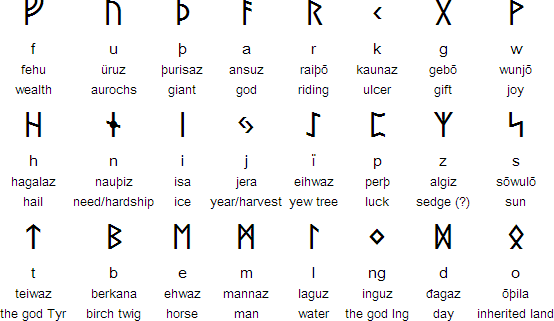
The word “Futhark” comes from the letters of the RunicaAlphabet. The initial sounds of Fehu, Uruz, Thurisaz, Ansuz, Raidho, and Kenaz are combined to make the word “Futhark.”
Interestingly, this is also how the word “alphabet” came to be. Letters Alpha and Beta combine to make alphabet.

